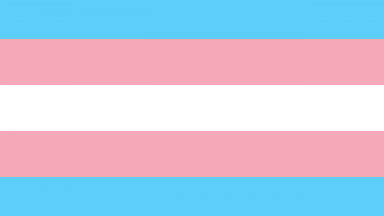
Published Friday 1 April 2022
Global Majority or BAME? Disabled or d/Deaf and Disabled? Which language should we use? And how do we make those decisions? Below we’ve outlined some of the changes to language we use across our organisation to describe groups of people, why it’s important, and what you should take into consideration when you update language in your own organisation.
Why it’s important to update language and what’s important to consider when you do
Language holds history. But sometimes it becomes antiquated or ill-fitting, and we need to create new language to replace it. This process should be driven by the communities the language is intended to represent.
There’s a lot to be aware of when adopting new language as an organisation, whether that’s for internal or external use. Consistency, sensitivity and co-creation are key to inclusive practice.
Involve people with lived experience
It’s essential to continue making space for unrepresented voices so that their lived experience and preferences are listened to and actioned. This includes an ongoing exploration of language, naming and terminology. The expectation should be that language changes so that it is more appropriate, better represents the group and prioritises the choice/s of the groups the terminology is for.
Prioritise self-definition where you can
You should always prioritise describing people in the way that they describe themselves – this is known as self-definition. Collective terms aren’t always ideal but sometimes they need to be used. They don’t ascribe identity to individuals or replace how individuals can and do identify. The terms aim to represent multiple groups.
Avoid deficit-based language
Avoid using deficit-based language. Focus on language that centres the individual and doesn’t reinforce negative stereotypes about their circumstances e.g. ‘vulnerable’, ‘at risk’, or ‘suffers from’. For example, at Youth Music we use the term ‘Disabled’ in line with the social model of disability. The model helps us recognise barriers that make life harder for disabled people, and puts responsibility on people to remove those barriers. We use the term ‘barriers’ when describing what are often structural issues in society that prevent young people’s access to making, learning and earning in music.
The process
The process should be appropriate to an organisation’s size, reach, ethos, and what is best practice. What is considered best practice, or the popularity of an approach, may change over time.
There is no one-size-fits-all approach. However, we as individuals and collectively as workforces should proactively approach the evolution of language. There are many actions an organisation can take to ensure language used is inclusive, appropriate and avoids using out of date terminology:
- Listening to youth voice via projects, colleagues, young board members etc.
- Safe open dialogue with peers
- Glossaries and resources
- External specialists
- Space to self-identify in data collection
- Benchmarking with similar organisations
Current Youth Music data collection categories
We collect diversity data from organisations that apply for Youth Music funding. We are committed to an inclusive approach in using language that is chosen within the communities it serves. Alongside the launch of the Trailblazer and Catalyser funds, we have updated some of our diversity data monitoring categories.
Are 51 per cent or more of your senior management team and board made up of people who are/define as…
- Female
- Non-binary
- LGBTQ+
- Aged between 18-25
- Being from a working class background
- There are a number of ways you could define working class. We think that the definition used in the ‘Panic!’ research is the easiest to understand and most relevant for our industry. Although if you define it in a different way, that’s fine.
- The ‘Panic!’ research defines “working class social origins” as the group of people that have “grown up in a household where the main income earner worked in a semi-routine or routine manual job, or was long term unemployed.” Read more here: http://createlondon.org/wp-content/uploads/2018/04/Panic-Social-Class-Taste-and-Inequalities-in-the-Creative-Industries1.pdf
- Being from the Global Majority
- By Global Majority we mean people who are Black, African, Asian, Brown, dual-heritage, indigenous to the global south, and or, have been racialised as 'ethnic minorities'. Globally these groups currently represent approximately eighty per cent (80%) of the world's population, making them the global majority now. Read more about the origins of this term: https://www.linkedin.com/pulse/global-majority-we-need-talk-labels-bame-campbell-stephens-mbe/
- d/Deaf or Disabled
- We use the term ‘Disabled’ in line with the social model of disability, which states that people are disabled by barriers in society, not by their impairment or difference. Barriers can be physical, like a building not having a lift. They can also be caused by people’s attitudes to difference, for example if they assume disabled people can’t do certain things.
- The social model helps us recognise barriers that make life harder for disabled people, and puts responsibility on people to remove those barriers. Read more about the social model here: https://www.scope.org.uk/about-us/social-model-of-disability/
- https://hearmeoutcc.com/capital-d-small-d-deaf/
- Neurodivergent
Making changes: Consistency and comparability
Always consider the wider and long-term impacts of using different language. For example, you may want to implement changes to an Equal Opportunities monitoring form annually, biannually or alongside a significant period of review and consolidation for your organisation.
Making changes between periods when the form is in use will ensure you collect consistent data. It will be clearer when it comes to analysis and reporting to know the exact round that the changes went ‘live’. Also bear in mind that externally facing language should be updated comprehensively, avoid making changes in certain areas of your website or forms, and not all of them.
Maintaining a tracker that records what changes you do or don’t make, when they were reviewed, and when and where they were implemented will help you stay on top of changes in the long-term.
As well as ensuring language is consistent internally and changes are made at all points they need to be, you’ll need to be mindful that your categories or language are still comparable with historical data within your organisation. There are many reasons why you would want to avoid a knee-jerk reaction to new language, which is why involving people with lived experience is an essential step.
You may also like...
How Youth Music uses data collection to track diversity
It's crucial in understanding where there may be inequalities, barriers to opportunities and to progression.
Collecting transgender-inclusive data
Best practice from the Human Rights Campaign.
Funding
Discover funding options available with Youth Music.



